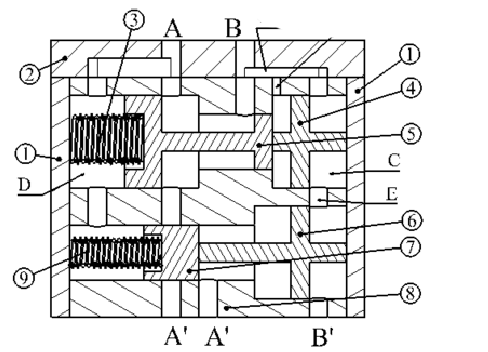The actual flow rate of hydraulic valves is influenced by the series or parallel arrangement of hydraulic circuits. In series circuits, flow rates are uniform throughout, while parallel circuits combine the flow rates of individual paths. For systems using single-rod hydraulic cylinders, attention must be paid to the difference in return flow rates between rod extension and retraction, which is proportional to the ratio of the areas of the two chambers.

Rated Pressure and Flow Rate of Hydraulic Valves:
The rated pressure and flow rate of hydraulic control valves should closely match the operating pressure and flow requirements. For systems demanding high reliability, valve rated pressures should exceed operating pressures. Undersized rated pressures or flow rates may lead to hydraulic lock-up and adversely affect valve performance. Sequential and pressure relief valves should have through-flow rates not significantly smaller than their rated flow rates to prevent vibration or instability. Minimum stable flow rates should also be considered for flow control valves.
Installation and Connection Methods of Hydraulic Valves:
The installation and connection methods of valves significantly impact the design and integration of hydraulic systems. Plate-mounted valves offer ease of integration and maintenance, as they can be installed directly on manifold blocks without disassembling hydraulic lines. In contrast, stack valves require careful selection based on pressure and flow considerations and may involve more complex installation.
Selection of Directional Control Valves:
For simple directional valves, attention should be paid to selecting appropriate opening pressures. Lower opening pressures reduce flow resistance but may be insufficient for backpressure applications, where higher opening pressures are necessary. For pilot-operated directional valves, in addition to considerations mentioned elsewhere, the selection of pressure relief methods should prevent abnormal system vibrations and noise. External leakage relief is preferred for outlets with backpressure, while internal leakage relief may be suitable for other scenarios.
In choosing directional valves, considerations for automation, operating cycles, and control methods, including manual, mechanical, electromagnetic, or electro-hydraulic, should be evaluated. Proper selection of the neutral position and transition states for spool-type directional valves is essential. For systems utilizing hydraulic locks (dual pilot-operated check valves) to secure hydraulic actuators, "H" or "Y" shaped neutral positions for spool-type directional valves are recommended. This ensures that both control chambers of the pilot-operated check valves are connected to the tank during neutral positions, guaranteeing reliable valve resetting and effective actuator locking. The neutral position of selected spool-type directional valves should not completely block hydraulic pathways during transitional states to prevent catastrophic pressure spikes and potential pipeline ruptures.
